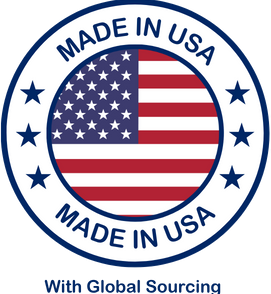Regulatory Compliance
Homeopathic medicines have been classified as “drugs” since their inclusion in the Federal Food, Drug, and Cosmetic Act in 1938 by the bill’s primary author, Senator Royal Copeland, MD, from New York. Senator Copeland had studied homeopathy at Michigan and was later dean at the New York Homeopathic Medical College and Health Commissioner for the City of New York.
Homeopathic medicines are not Dietary Supplements.
In order for a company to legally manufacture homeopathic medicines in the USA, medicines must be manufactured in an FDA-registered and inspected facility, licensed by the state as a drug manufacturer.
FDA Facility Registration
This is a requirement for both USA and foreign facilities that sell products for the USA market.
The facility must comply with current Good Manufacturing Practices (cGMP) including FDA CFR title 21 parts 210 and 211, International Council for Harmonisation ICH Q1 and Q7, and the Homeopathic Pharmacopoeia of the United States (HPUS). Homeopathic medicines are classified as either Over-the-Counter (OTC) or Prescription (Rx) drug products.
FDA Guidelines
- https://www.fda.gov/drugs/pharmaceutical-quality-resources/current-good-manufacturing-practice-cgmp-regulations
- https://www.accessdata.fda.gov/scripts/cdrh/cfdocs/cfcfr/CFRSearch.cfm?CFRPart=210
- https://www.accessdata.fda.gov/scripts/cdrh/cfdocs/cfcfr/CFRSearch.cfm?CFRPart=211
ICH Guidelines
- https://www.ich.org/page/quality-guidelines
- https://database.ich.org/sites/default/files/Q7 Guideline.pdf
HPUS Guidelines
The manufacturing process requires compliance with guidelines for manufacturing conventional pharmaceutical products but additionally requires compliance with HPUS, which has the guidelines to manufacture homeopathic products according to traditional methods and modern quality control standards. Each of the more than 1,300 medicines included in the HPUS is described and monographed for identification, quality standards, manufacturing process, analytical procedures, stability, and safety purposes.
The main topics covered by regulations are quality units, comprehensive robust quality systems, standard operating procedures, water system validation, equipment IQ/OQ/PQ, equipment validation, quality control testing for raw materials (including identification), intermediate and finished products, calibration of all testing equipment, compliance with CFR part 11, six-system inspection model, cleaning validations, manufacturing process validations, validation of the dilution/succession process, blend uniformity, content uniformity, stability studies, finished product testing, personnel training records, annual product reviews, change controls, out-of-specification investigations, pharmacovigilance, corrective and preventive actions, internal audits, and continuous improvement.
If we want to facilitate the further development of homeopathy in the 21st century, we must adapt to the high quality manufacturing standards required by regulatory agencies and comply with the evidence-based research necessary to validate the therapeutic effectiveness of homeopathy.
Currently, the USA has the highest and most stringent quality standards for manufacturing homeopathic medicines, since we must comply with the same manufacturing regulations for standard conventional pharmaceuticals and additionally the HPUS manufacturing guidelines. We must ensure proper QC identification of the starting material and follow a standardized and reproducible manufacturing method to achieve a finished high quality homeopathic medicine.
This is not the only advantage of regulatory compliance. Scientifically validating our manufacturing methods not only increases our confidence in formulating homeopathic medicines but is also the first step in validating the therapeutic effect of homeopathy. Without compliant and properly manufactured homeopathic medicines, no clinical research can subsequently be validated.
Non-compliant, illegal homeopathic medicines are manufactured in unregistered, non-inspected facilities that use questionable manufacturing methods. Additionally, one can find self-compounding medicines from untraceable, unreproducible, and unknown sources. It is not desirable to add an extra variable of uncertainty to the selection of an indicated medicine. Although I am not going to comment directly on the rationale of such manufacturing methods, I must add that it is vital to continue the path to scientifically validate homeopathy, and such methods will take homeopathy in the opposite direction. The FDA considers such products to be adulterated, misbranded, and potentially unsafe. Homeopathy has been based on science since the times of Hahnemann; it is not a religion nor a dogma. Regulatory compliance is difficult, laborious, and costly to follow, but it is the only way homeopathy will be able to further develop and move forward well into the 21st century.
According to 19th-century philosopher Arthur Schopenhauer, “All truth passes through three stages: First, it is ridiculed. Second, it is violently opposed. Third, it is accepted as self-evident.” We are still in the second stage, so regulatory compliance is a must. Once technology advances more and enables the detection and better understanding of nanoparticles, we will move into the third stage.

